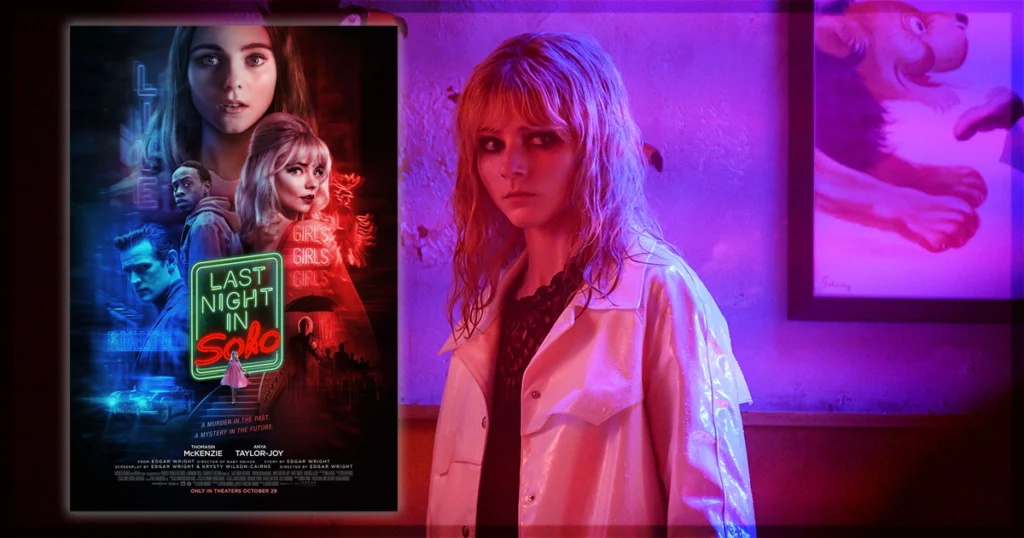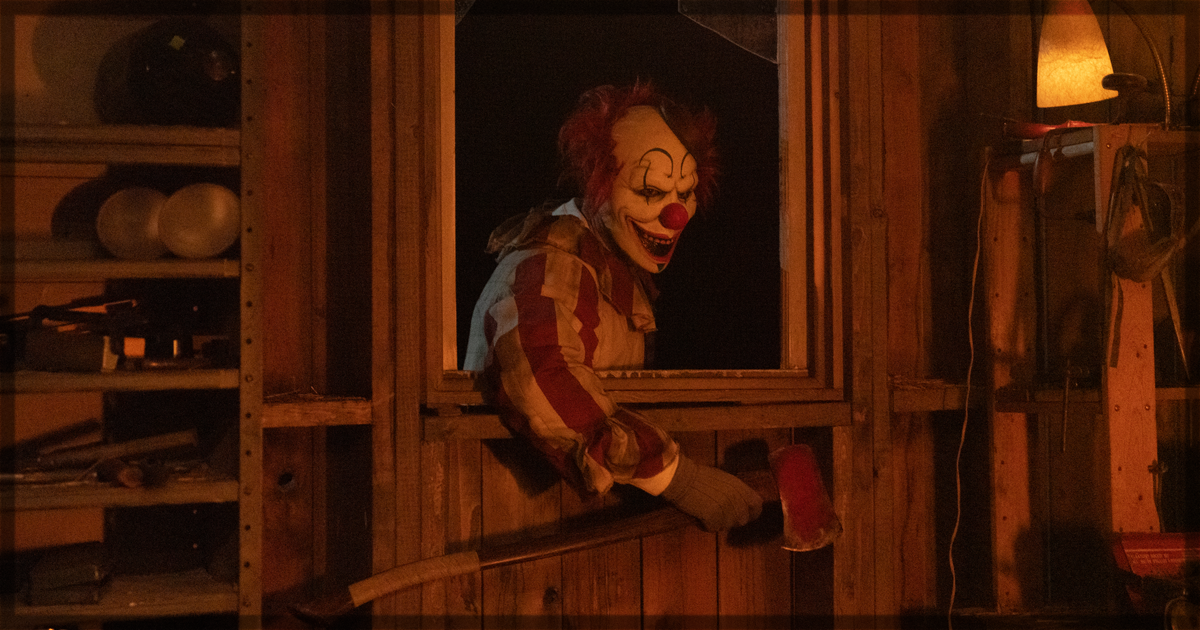Directed by Eli Craig (Tucker and Dale vs. Evil) and written by Craig himself alongside Carter Blanchard (Good vs Evil), Clown in a Cornfield is an adaptation of Adam Cesare’s book of the same name, bringing to the big screen a well-balanced mix of horror and comedy, with a macabre touch that directly channels the spirit of 1980s slashers. Starring Katie Douglas (Lazareth), the film centers around a murderous clown wreaking havoc among corn stalks and outdated conventions, during a blood-soaked local holiday with more on its mind than one might initially expect.
Clown in a Cornfield takes place in Kettle Springs, a rural community seemingly frozen in time, where older residents look on with suspicion at the values and habits of the younger generation. Quinn (Douglas), new in town after her mother’s death, tries to adjust to her unfamiliar surroundings while dealing with an emotionally distant father and a group of high school peers who, like herself, feel the heavy burden of the town’s obsolete expectations. But what begins as a run-of-the-mill “fish out of water” story quickly evolves into a sharp piece of social commentary disguised as a carnival-style massacre.
What sets the movie apart is how it tackles the clash between tradition and modernity, functioning almost as a cultural allegory for today’s world – more specifically, the contemporary USA. The generational divide between boomers (born in the 1940s-60s) and Gen Z (late 1990s-2010s) is portrayed in a literal, bloody fashion, where the adults would rather destroy everything – and everyone – than accept that the world has changed. This refusal to embrace difference, innovation, and diversity lies at the heart of Clown in a Cornfield, expressed both through grotesque murders and subtle emotional tensions.
A clear example is Quinn’s relationship with her father, Dr. Maybrook (Aaron Abrams), which is defined by a superficial attempt at reconciliation that the screenplay lightly touches on, focusing more on structural critique than individual drama. There’s a single line of dialogue that briefly addresses Quinn’s grief – enough for context but far from developing a truly meaningful layer.
Where Clown in a Cornfield really shines is in its second half, when the thematic material begins to merge more clearly with the action. Craig’s vision proves effective in blending gore with dark humor, creating memorable sequences – like a hilariously absurd moment involving a rotary phone – that almost parodically illustrate the technological gap between generations. These moments highlight the dysfunction of intergenerational interactions where adults and teens simply don’t speak the same language – literally or culturally.
The killing sequences, as expected in a tribute to ’80s slashers, are over-the-top, flashy, and deliciously inventive. And just when the violence might start to feel gratuitous, the thematic subtext kicks in to reinforce the generational dissonance and the desperation of a decaying community that would rather incite fear than engage in dialogue. That said, despite numerous twists, Clown in a Cornfield ends up being somewhat predictable – not due to a lack of imagination, but because everything aligns so closely with the film’s thematic blueprint. In this case, predictability doesn’t exactly work against it; it merely affirms the narrative’s cohesive structure.
Visually, the movie leans into an atmospheric, almost rural-gothic tone, with settings that blend the idyllic calm of countryside living with the grotesque imagery of horror. Brian Pearson’s (See) cinematography and Brian Kane’s (Yellowjackets) production design complement the town’s oppressive vibe and the nightmare-filled nights with flair and precision.
In terms of performances, Douglas clearly stands out from the rest. Her character partially fits the “final girl” archetype, but shows a level of complexity and resilience that transcends pure survival instinct. Quinn isn’t just there to scream and run – she thinks, acts with logic, and shows empathy. Her romantic connection with Carson MacCormac’s (Shazam! Fury of the Gods) character gains added depth thanks to a compelling revelation that fits neatly within the movie’s examination of tradition versus change. Without giving too much away, this subplot provides a smart reflection on what society still deems “normal” and how it resists adapting to modern views – particularly when it comes to questions of identity.
Final Thoughts on Clown in a Cornfield
Clown in a Cornfield is a pleasant surprise in the 2025 horror landscape. It starts off rather generically – a conservative town, a group of rebellious teens, a masked killer – but quickly finds its own identity through well-crafted social commentary and a strong execution of slasher tropes. With solid performances, confident direction from Eli Craig, and a healthy dose of dark humor, the movie wins over its target audience through gory entertainment and thematic relevance, even if not all of its ideas are fully explored and some narrative decisions feel more convenient than organic. It’s a grim but clever portrait of a society in denial, where the past refuses to die… even when it’s literally buried in a cornfield.
Rating: B
Clown in a Cornfield is now playing in theaters.
Learn more about the film, including how to buy tickets, at the official website for the title.
You might also like…


